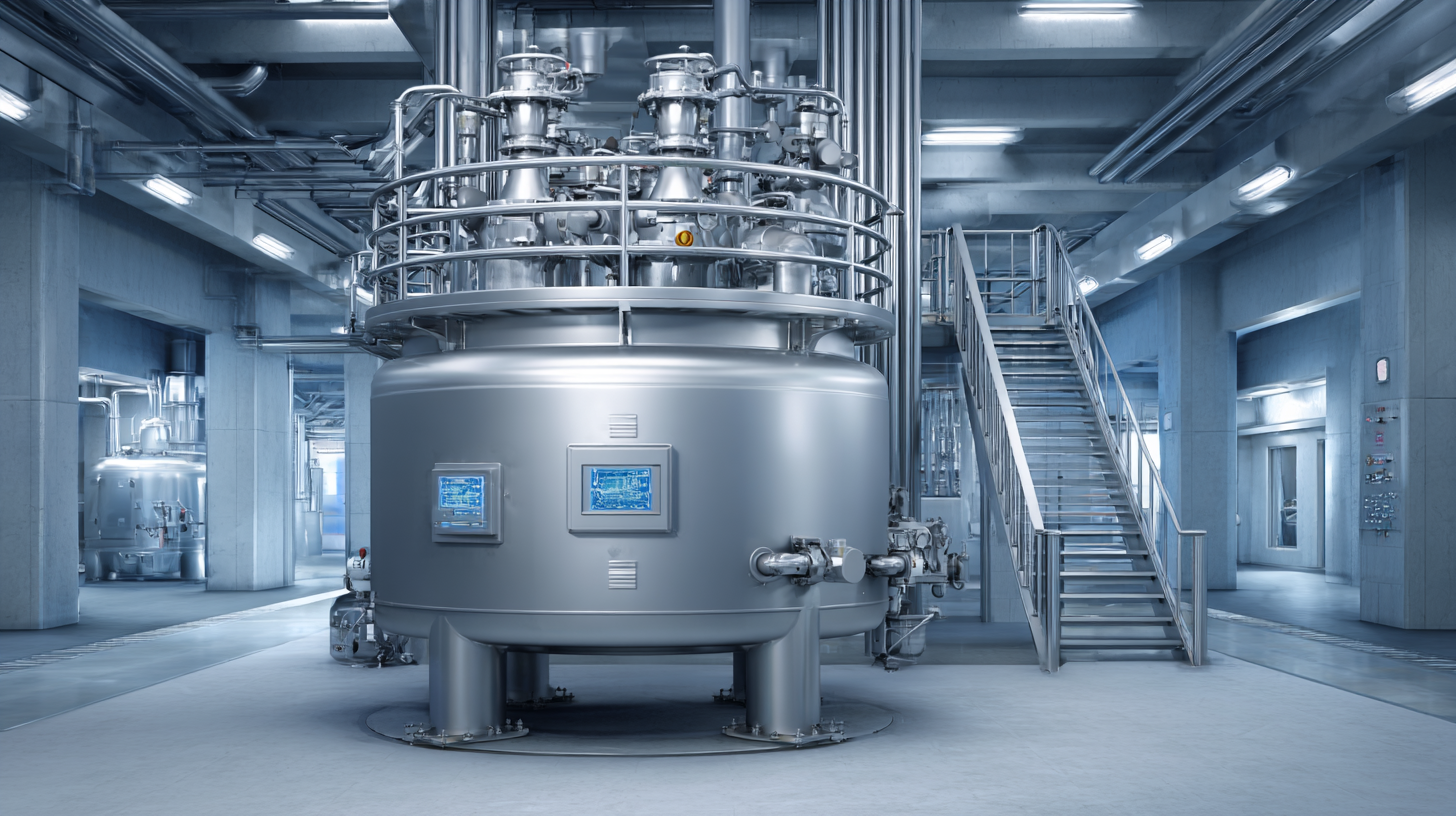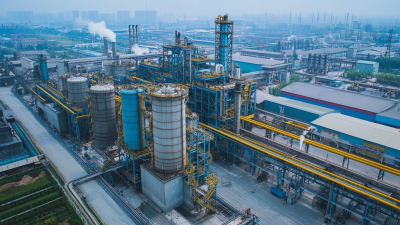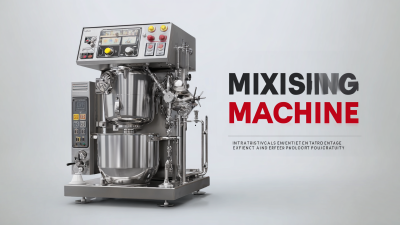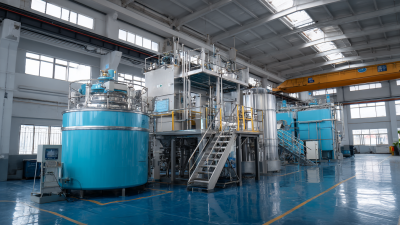
In the realm of industrial mixing processes, the Agitator Mixer Tank stands at the forefront of innovation, transforming how materials are blended for various applications. This introduction will delve into the science behind these advanced mixing systems, exploring their design, functionality, and the technological advancements that have propelled them into essential tools for manufacturers worldwide. By understanding the mechanics of Agitator Mixer Tanks, we can appreciate their role in enhancing efficiency, consistency, and quality in production. From chemical manufacturing to food processing, the versatility and effectiveness of these tanks highlight their significance in modern industries. This guide will provide practical insights into how Agitator Mixer Tanks revolutionize mixing processes, equipping professionals with the knowledge needed to optimize their operations and achieve superior results.

Agitator mixer tanks play a vital role in various industrial applications, particularly in sectors such as chemicals, pharmaceuticals, and food processing. These tanks facilitate efficient mixing and blending of materials, ensuring homogeneity and desired properties in final products. Recent advancements in agitator technology have led to the development of innovative solutions that enhance mixing efficiency, such as new dual-shaft mixers designed for complex formulations. Understanding the fundamentals of these systems can provide insights into their operational effectiveness and capability to handle a range of materials.
When considering the implementation of agitator mixer tanks, it is essential to evaluate the power input and design features like impeller spacing, which can significantly impact mixing performance. For optimal energy efficiency, selecting modern agitators that offer energy-saving features and durability is crucial. Tips for selecting the right equipment include assessing the specific application requirements and considering the latest innovations in the market that prioritize energy efficiency, such as advanced vertical agitators and counter-rotating designs that provide effective mixing while minimizing energy consumption.
Agitator mixer tanks have emerged as essential tools in various industrial mixing processes, offering significant advantages that enhance mixing efficiency. According to a recent report by MarketsandMarkets, the global industrial mixer market is projected to grow from $3.93 billion in 2021 to $5.06 billion by 2026, highlighting the increasing importance of efficient mixing technologies. Agitator mixer tanks are designed to provide uniform blending of materials, ensuring consistent product quality, which is crucial in industries such as chemicals, food and beverage, and pharmaceuticals.

One of the key benefits of using agitator mixer tanks is their ability to achieve high mixing efficiency. The optimized design of these tanks facilitates better fluid dynamics, resulting in faster mixing times and reduced energy consumption. Research indicates that by utilizing advanced agitator designs, industries can improve mixing times by up to 30%, drastically enhancing production rates. Additionally, these mixers can handle a wide range of viscosities and densities, making them versatile solutions for complex formulations, which is particularly valuable in sectors demanding high precision and customization.
Innovative technologies are transforming agitator mixer designs, enhancing their efficiency and versatility in various industrial applications. One of the most significant advancements is the integration of smart sensors and IoT technology, which allows for real-time monitoring and control of mixing parameters. These sensors can provide data on viscosity, temperature, and chemical composition, enabling operators to make adjustments on-the-fly for optimal mixing performance. This level of control not only improves product consistency but also reduces waste and energy consumption.
Furthermore, the development of advanced materials and engineering techniques has led to the creation of more durable and efficient agitator blades. Computational fluid dynamics (CFD) modeling is now commonly used to design mixer geometries that minimize turbulence while maximizing mass transfer. This approach results in mixers that can handle a wider range of viscosity levels and flow rates, making them suitable for diverse applications, from pharmaceuticals to food processing. With these innovations, the future of agitator mixer tanks looks promising, paving the way for faster, safer, and more sustainable industrial mixing processes.
In the realm of industrial mixing, the efficiency and performance of different methods are paramount. Agitator mixer tanks have emerged as a revolutionary alternative to traditional mixing techniques, particularly when handling highly viscous fluids. Recent studies indicate that these advanced mixing solutions can reduce energy consumption by up to 30% compared to conventional mixers. This is especially significant given the increasing emphasis on energy-efficient processes in manufacturing.
A comparative analysis reveals that while traditional mixing methods often result in uneven shear distribution and longer mixing times, agitator mixer tanks provide enhanced control and efficiency. Their design allows for better circulation and dispersion of materials, which is critical in industries such as food processing and pharmaceuticals where consistency is key. Moreover, the latest frameworks for assessing mixing equipment highlight the importance of selecting technologies that not only fit the application but also optimize energy performance.
**Tips:** When considering a switch to agitator mixer tanks, evaluate the specific requirements of your mixing process, including viscosity and batch size. Additionally, invest in energy performance assessments to ensure you select the most efficient equipment for your needs. Regular maintenance and monitoring can further enhance the efficiency and lifespan of your mixing systems.
Agitator mixer tanks are transforming industrial mixing processes across various sectors, particularly in the food and beverage industry. According to recent reports, the food and beverage industry pumps market, which includes agitators and mixers, is projected to experience substantial growth, reflecting a shift towards more efficient mixing technologies. The increasing demand for high-quality beverages and processed foods has driven manufacturers to adopt advanced agitator mixer tanks that enhance mixing efficiency and product consistency.
In wastewater treatment, the latest innovations in adaptable mixer technologies are paving the way for improved operational efficiency. For instance, new compact submersible mixers are designed to optimize mixing in challenging environments, ensuring effective wastewater management. Such advancements not only contribute to enhanced mixing performance but also support sustainability initiatives within the industry by reducing energy consumption and operational costs. As industries continue to embrace state-of-the-art mixing solutions, the role of agitator mixer tanks becomes increasingly vital in meeting production demands and adhering to environmental regulations.







